Oceania: From Melbourne to Papeete
Gael Newton 2019
Slightly editted from the original version part of the exhibition catalogue Musee du Quai Branly 's Ouvrir d’album du mond, 2019
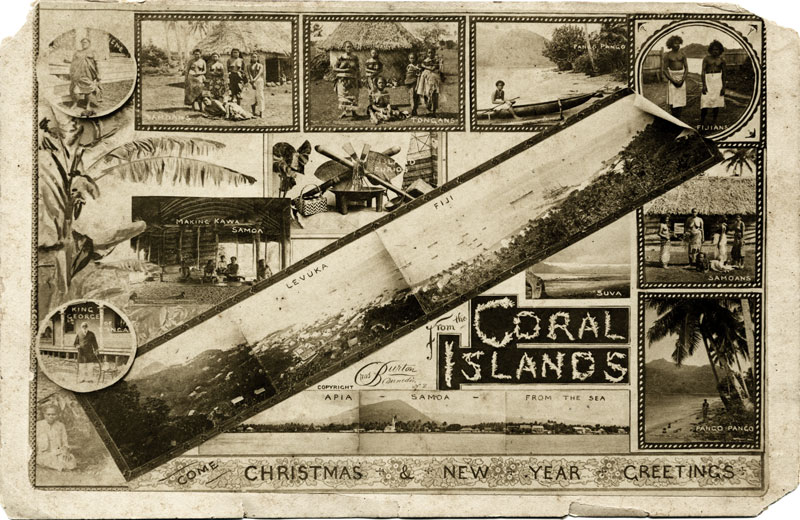 |
| Postcard Coral islands |
From the mid to late-nineteenth century the Oceania was under British, European or American influence or control. Only Tonga avoided being colonised. The region was home to indigenous peoples, European and Asian immigrants and locally born settlers of mostly EurAmerican descent.
Oceania thus presented opportunities in places where travellers fellow nationals were already established. For some the region was an imagined tropical paradise, for others a place of exile, punishment or forced labour. Recruited labour from China, India and Japan was significant especially in Hawaii.
Photographic news, products and photographers reached Oceania contemporaneously with the debut of photography in EurAmerica and then followed similar patterns of global development.
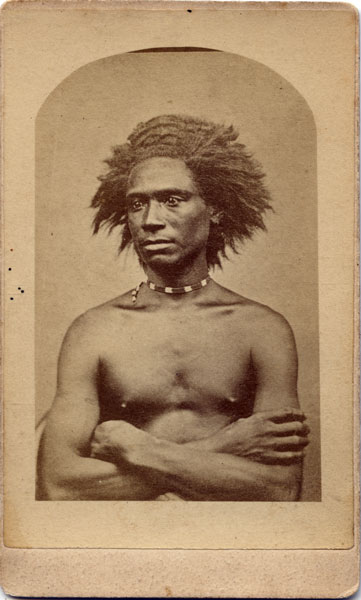 |
|
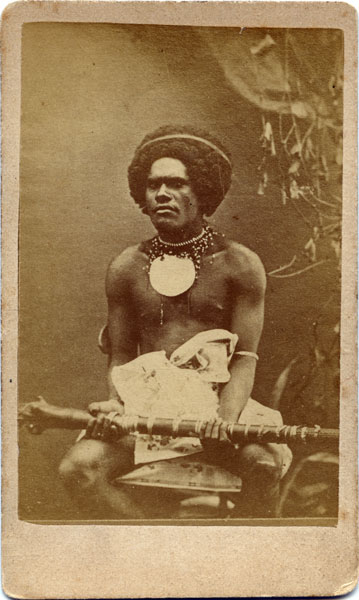 |
| Fijian Man |
|
Fijian Warrior |
| |
|
|
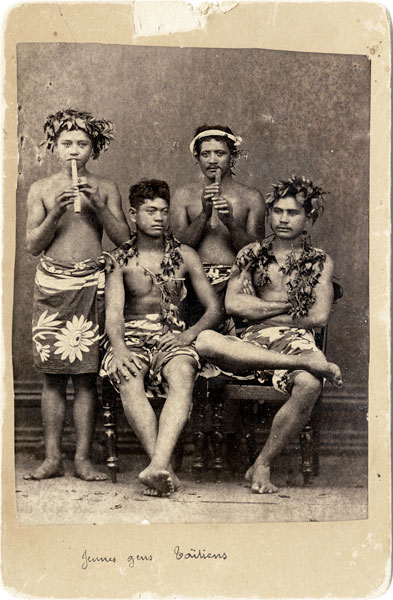 |
|
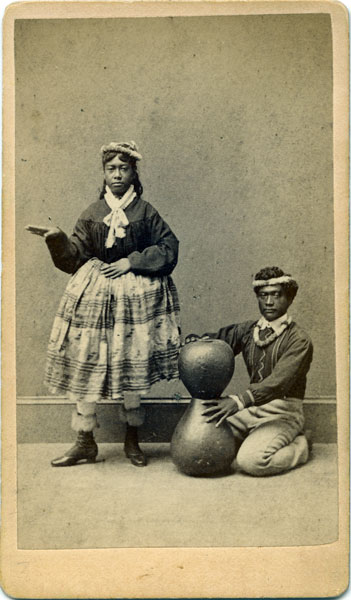 |
| Hoare: Young Tahitians |
|
Hawaii, Hula Dancers |
| |
|
|
The pioneer photographers who would document Oceania were foreigners until a local generation appear in the 1890s. Hawaii had two Hawaiian, twenty Japanese and a few Chinese photographers in the 1890s. Few women had studios under their own name. Elizabeth Pulman (qv) in New Zealand and Susan Hoare in Tahiti took over their husband’s studios in the 1870s and managed on their own for several decades. Both made a name for portraiture of indigenous sitters.
Very little activity with the earliest paper processes is known in Oceania. Photogenic drawings were reported on in Australia in 1839 and examples presented to the Sydney Mechanics School of Arts in 1841. On 13 May 1841 a daguerreotype camera was demonstrated and sold in Sydney by French sea captain A. Lucas (qv). Vice-Admiral French Pacific A.A. Dupetit-Thouars took a camera to Tahiti in 1842 but it was not used. Knowledge was widespread it seems but not outcomes.
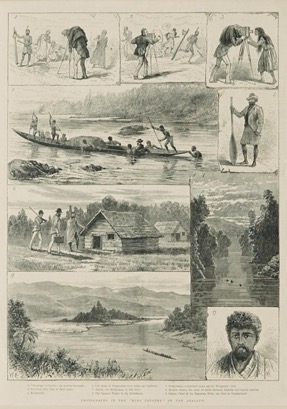 |
‘Alfred Burton's King Country Trip’ Illustrated London News 3 September 1887 p.253
Edward Payton ‘Photographs in the King Country Shooting a native anxious moments’
Photographs in the “King Country” of New Zealand. |
The first professional in Oceania was English daguerreotypist G. B. Goodman based in Australia from 1842 until 1846. He soon faced local and itinerant competitors. A number of American-trained daguerreotypists traversed the Pacific to settle or on their way to Asia. J. W. Newland (qv) was in Australia from 1847-48 and exhibited portraits of Pacific islanders. The earliest Australasian indigenous portraits were made in Melbourne in 1847 by Douglas Kilburn.
Swede Cesar Diiben worked as a daguerreotypist from 1849 in North and South America, Australia, Southeast Asia and India returning home in 1858. He and Newland are possibly the first photographers to circle the world.
New Zealand Governor E. Eyre succeeded in making a daguerreotype of Henare Taratota in 1849. Several daguerreotypists were active in New Zealand from 1851. In Hawaii an amateur attempted daguerreotypy in 1845 while the first professional Senor Le Bleu from Peru, arrived in 1846. Between 1853-58 Austrian Hugo Stangenweld from California, was resident in Honolulu. His extant landscapes and royal portraits are the finest cache of Oceania daguerreotypes.
In New Zealand J N Crombie from Glasgow, sent daguerreotypes of Maori chiefs to the Illustrated London News in early 1856 but they were not published.
Amateurs succeeded surprisingly well in tropical conditions. In New Caledonia, Father Andre Chapuy, of the Marist mission made daguerreotypes from 1848 including the earliest Melanesian portrait in 1849. Chapuy recorded that in one session in 1862 he made forty-five plates.
Daguerreotypy flourished commercially in the Australian colonies but only a few hundred of a possible 100,000 plates survive. A few hundred more are extant from elsewhere in Oceania. However, as the recent biography of J.W. Newland (qv) demonstrates, the private and public experience of daguerreotypy, was part of profound new visual culture.*De Courcy and Jolly, 2022
With the advent of negative-positive photographic processes in the mid-1850s, numbers and types of photographers grew and most port cities had resident studios by the mid 1860s.
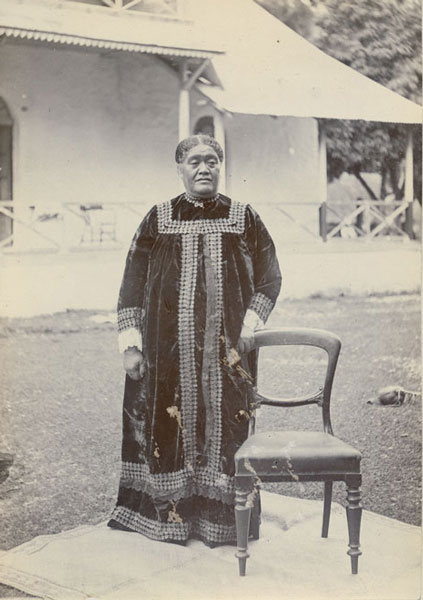 |
| 3 Photographs from Banks Album |
British and French naval officers on Pacific expeditions were among the pioneer photographers of the 1850s and 1860s. Of particular talent was Admiral Paul-Emile Miot in the French Pacific in 1868-71. Photographers on HMS Curacao flagship of the Australia station from 1863 to 1866, took and collected photographs in the Pacific including of the Waikato war in New Zealand in 1864. The first expedition with official photographers and darkrooms was HMS Challenger in 1872-76. Archives survive from all these expeditions.
Across the world the cheap miniature carte de visite portrait was the bedrock of studio profit, but in Oceania equally lucrative were sales of cartes of indigenous ‘types’. In 1873 the American Photographic Company in Auckland boasted of 30,000 cartes of ‘Maori Celebrities’.
Some photographers made attempts at authentic props and settings such as Allan Hughan in New Caledonia. His compositional skills are also evident in his coverage of the settlements, prisoners, missionaries and plantations of New Caledonia. Hughan lived the dream of immigrant photographers in having almost exclusive access to official and commercial photography in one location.
Operating in regional New South Wales in 1872, German photographer J.W. Lindt made his name with tableaux of Aboriginals posed with implements. He would make major studies in New Guinea in 1885 and the Pacific Islands in 1889- 91. Lindt’s images were widely disseminated internationally - and remain so today. Images of exotic lighter skin Pacific Islanders especially attractive women, were also very well circulated from the 1870s.
Many regions in Oceania had completely new settlements of which promotional views and panoramas were produced in large numbers from the late 1850s. J.N. Crombie’s 1859 view of Commercial Bay, Auckland, was reproduced in the Illustrated London News of 19 May 1860.
One of the most ambitious wet-plate projects was funded by German businessman B.O. Holtermann in Sydney. Between 1870-1885 he commissioned English photographer Beaufoy Merlin and his Australian assistant Charles Bayliss (qv) to photograph civic progress in New South Wales and Victoria. Bayliss made mammoth plate panorama of Sydney Harbour in 1875 and giant glass negatives.
Landscapes and wilderness regions ripe for development were sought-after profitable subjects. James Bragge in New Zealand made trips in the South Island in the mid-1870s. Alfred Burton of the Burton Brothers studio in Dunedin, South Island, made views up to 20 by 18 inches of scenic wonderlands. In 1885 after trips to Pacific Islands, Burton was the first to record remote North Island Maori villages.
Amateur photographers across Oceania made important records. Christian J Hedemann in Hawaii extensively photographed Island life and landscape of Hawaii between 1878-1895. Dr A.C. Barker in Christchurch New Zealand had his own mobile darkroom van in the 1860s.
Throughout the Pacific Islands and Australia missionaries, administrators and ethnographers made historic documents indigenous ways of life and artefacts. While having few commercial studios, New Guinea was extensively photographed by amateur and commercial photographers throughout the late nineteenth and early 20th century.
From 1871 new methods of fine quality photomechanical illustration greatly extended the reach of photographic images and photographer’s income and reputation. J.W. Lindt’s 1887 Picturesque New Guinea: with an historical introduction and supplementary chapters on the manners and customs of the Papuan, was a best seller and earned him a fellowship of the Royal Geographic Society. |
|
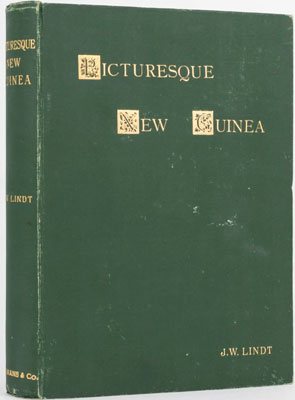 |
Alongside emerging camera club and art photography trends, professional photographers also sought shifted to producing
more aesthetic and human-interest images. N.J. Caire in Victoria and Lindt specialised in Arcadian bush scenes promoting health and recreation activities.
Among the most romantic and prolific portrayers of Pacific Islanders was New Zealander Thomas Andrew in Samoa from 1891 to circa 1905. He posed lovely young women and handsome men in the studio including a series of art photography style portraits of Tongan women in 1897.
The arrival of the half-tone photographic reproduction printed alongside text brought a flood of illustration and guide books. The picture postcard of the turn of the century became the world’s picture book extending the franchise of photographic experience at an intimate and domestic levels locally and internationally.
Links:
Sophia Hoare (England/ Tahiti)
Elizabeth Pulman (New Zealand)
J W Newland
Christine Hendeman (Denmark/ Hawaii)
Paul-Emile Miot (French)
Nicholas John Caire 1837 - 1918 (Australia)
Thomas Andrew (New Zealand)
J.W. Lindt (Australia)
Burton Brothers (New Zealand)
B.O. Holtermann (Austalia)
Charles Bayliss (Australia)
Beaufoy Merlin (Australia)
more of Gael Newton's Essays and Articles
|